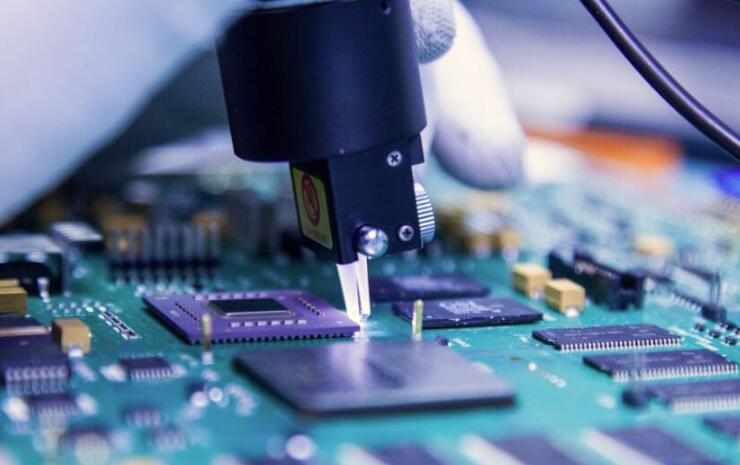Welding, assembly, and integrated circuits to perform at least one unique function are the general processes of electronic assembly. This is a crucial step in the production of ordinary electronic assembly, including computers, telephones, toys, engines, and remote controls. This ensures that the printed circuit board, which is the core of all dismantled electrical equipment and small tools, is functional.

The general process of electronic assembly usually includes the following steps
1. SMT mounting: SMT is the abbreviation for surface mount technology, which is the most commonly used mounting technology in modern electronic manufacturing. At this stage, SMT equipment accurately welds components onto the PCB board according to the mounting process requirements. Among them, SMT equipment includes SMT machines, ovens, and testing equipment.
2. Plugin assembly: In this stage, thermal convection components (such as pins, connectors, plugs, etc.) will be installed onto the PCB board through a wave soldering process. These components have a high degree of density and require highly precise installation techniques.
3. Welding: According to the design requirements, carry out welding work on the components that need to be welded. This stage mainly includes traditional manual welding, wave soldering, hot air soldering, infrared soldering, etc.
4. Assembly: At this stage, the assembly work of the casing, power supply, and wires will be carried out according to the design requirements of the PCB board.
5. Testing: After completing the assembly, it is necessary to inspect the PCB board to verify the performance and quality of the product. This stage of testing can include visual inspection, functional testing, signal testing, power testing, and environmental testing.
The electronic assembly is the electrical connection of electronic components supported by printed circuit boards. Structurally, the metal hardware and model shell that make up the product are installed in a certain order from the inside out by fastening the parts or other methods. Electronic products belong to technology-intensive products. The main characteristics of assembling electronic products and finished product assembly and processing are
(1) The electronic assembly is composed of multiple basic technologies, including component screening, lead forming technology, wire processing, welding, installation technology, and quality inspection technology, all of which are indispensable.
(2) The operational quality of its assembly can be determined through visual inspection or hand-feel identification.
(3) The relevant operators should undergo specialized training before taking up the job, otherwise they cannot.
Assembly technical requirements
(1) The marking direction of components should be by the direction requirements specified in the drawing. However, if it is not indicated on the drawing, it generally follows the principle of left to right and top to bottom.
(2) The polarity of components should not be installed incorrectly, and corresponding sleeves should be installed before installation.
(3) Its installation regulations should be carried out in accordance with the specified requirements. For components of the same specification, their height should be on the same horizontal plane.
(4) The reasonable range of the gap between the diameter of the component lead and the aperture of the printed solder pad is 0.2-0.4mm.
Steps of PCB electronic assembly process
An important step in electronic assembly is the PCB assembly process. Applying solder paste to the circuit board, selecting and arranging components, soldering, inspection, and testing are all steps in this process.
To produce the highest quality products, all these procedures must be followed and supervised. Because now almost all the circuit board assemblies use SMT technology.
1. Solder paste
Before connecting components to the circuit board, solder paste must be applied to these areas, commonly referred to as component pads. In addition, by directly installing a solder screen on the circuit board and recording it in an appropriate position, a flow channel is driven, and a small amount of solder paste is squeezed onto the circuit board through the holes of the screen.
Solder only deposits on its solder pads because its solder screen is created using circuit board files and has holes in the locations where these solder pads are located. To ensure that the final joint has an appropriate amount of solder, the amount of solder deposition should be controlled.
2. Pick and place
The components are picked up from the scroll and other distributors, and then placed in the correct position on the circuit board by a machine equipped with the component scroll.
3. Soldering
Even if some circuit boards can be soldered using wave soldering machines, this method is no longer commonly used for surface mount components. When using wave soldering, solder paste should not be applied to the circuit board, as the wave soldering machine provides solder. Similarly, reflow soldering is more commonly used than wave soldering.
4. Inspection
Once the soldering process is completed, the circuit board will be regularly inspected. Surface mount boards with 100 or more different components cannot be manually inspected. Automatic optical inspection is a more practical option. Some machines can inspect circuit boards, and also detect poor connectors, missing components, and occasionally incorrect components.
Miniaturization and versatility have always been the development goals of electronic component packaging technology. With the development of electronic component packaging technology, electronic assembly technology has also gone through four stages of development: manual welding, immersion welding, wave soldering, and surface assembly. Electronic assembly manufacturing has the advantages of high assembly density, high reliability, and good high-frequency performance, making it possible to miniaturize multifunctional electronic products.